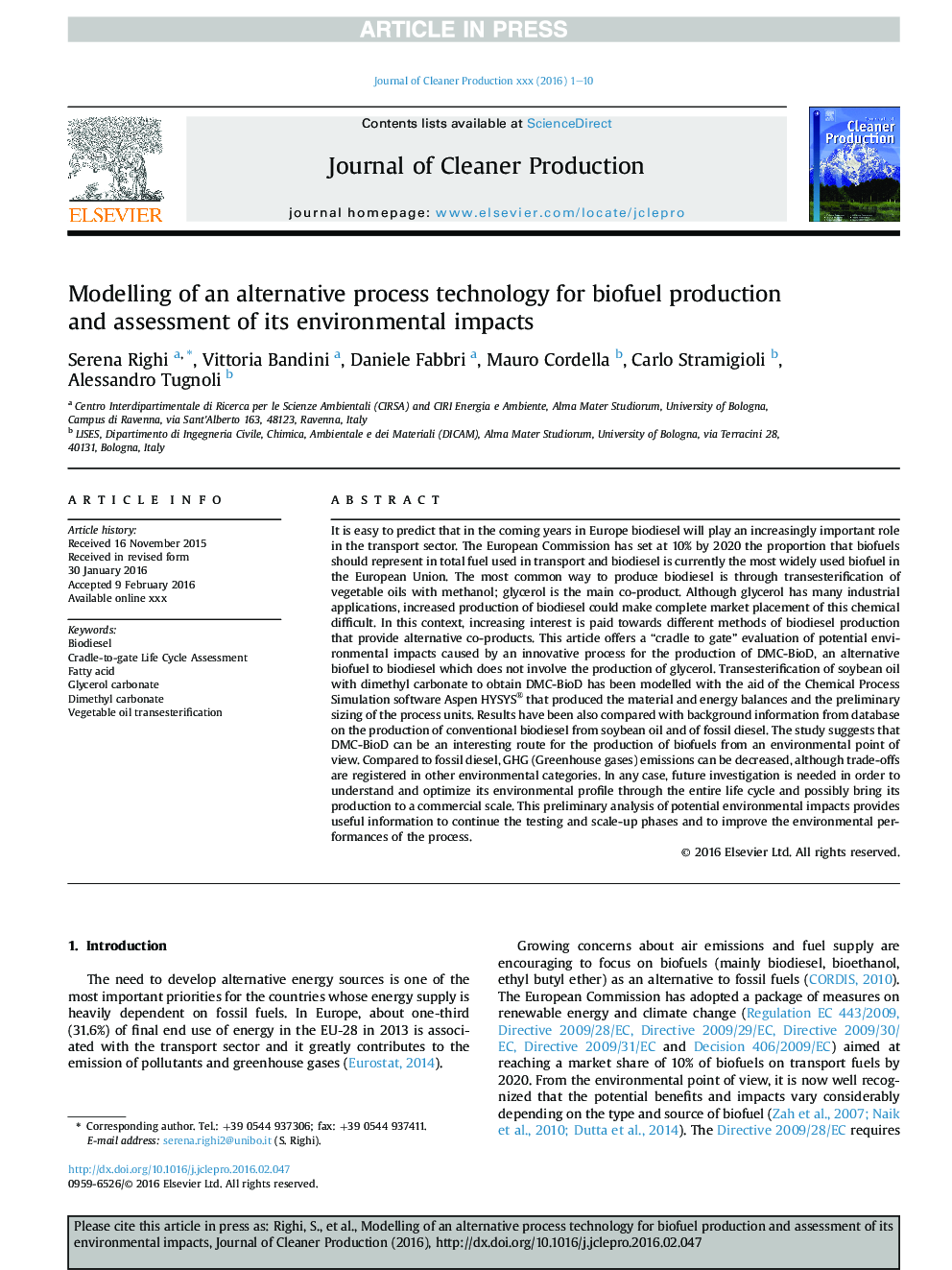| کد مقاله | کد نشریه | سال انتشار | مقاله انگلیسی | نسخه تمام متن |
|---|---|---|---|---|
| 8102380 | 1522127 | 2016 | 10 صفحه PDF | دانلود رایگان |
عنوان انگلیسی مقاله ISI
Modelling of an alternative process technology for biofuel production and assessment of its environmental impacts
ترجمه فارسی عنوان
مدل سازی تکنولوژی فرآیند جایگزین برای تولید سوخت زیستی و ارزیابی اثرات زیست محیطی آن
دانلود مقاله + سفارش ترجمه
دانلود مقاله ISI انگلیسی
رایگان برای ایرانیان
کلمات کلیدی
موضوعات مرتبط
مهندسی و علوم پایه
مهندسی انرژی
انرژی های تجدید پذیر، توسعه پایدار و محیط زیست
چکیده انگلیسی
It is easy to predict that in the coming years in Europe biodiesel will play an increasingly important role in the transport sector. The European Commission has set at 10% by 2020 the proportion that biofuels should represent in total fuel used in transport and biodiesel is currently the most widely used biofuel in the European Union. The most common way to produce biodiesel is through transesterification of vegetable oils with methanol; glycerol is the main co-product. Although glycerol has many industrial applications, increased production of biodiesel could make complete market placement of this chemical difficult. In this context, increasing interest is paid towards different methods of biodiesel production that provide alternative co-products. This article offers a “cradle to gate” evaluation of potential environmental impacts caused by an innovative process for the production of DMC-BioD, an alternative biofuel to biodiesel which does not involve the production of glycerol. Transesterification of soybean oil with dimethyl carbonate to obtain DMC-BioD has been modelled with the aid of the Chemical Process Simulation software Aspen HYSYS® that produced the material and energy balances and the preliminary sizing of the process units. Results have been also compared with background information from database on the production of conventional biodiesel from soybean oil and of fossil diesel. The study suggests that DMC-BioD can be an interesting route for the production of biofuels from an environmental point of view. Compared to fossil diesel, GHG (Greenhouse gases) emissions can be decreased, although trade-offs are registered in other environmental categories. In any case, future investigation is needed in order to understand and optimize its environmental profile through the entire life cycle and possibly bring its production to a commercial scale. This preliminary analysis of potential environmental impacts provides useful information to continue the testing and scale-up phases and to improve the environmental performances of the process.
ناشر
Database: Elsevier - ScienceDirect (ساینس دایرکت)
Journal: Journal of Cleaner Production - Volume 122, 20 May 2016, Pages 42-51
Journal: Journal of Cleaner Production - Volume 122, 20 May 2016, Pages 42-51
نویسندگان
Serena Righi, Vittoria Bandini, Daniele Fabbri, Mauro Cordella, Carlo Stramigioli, Alessandro Tugnoli,
